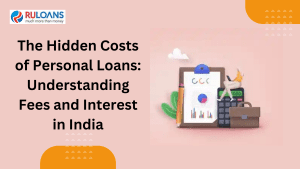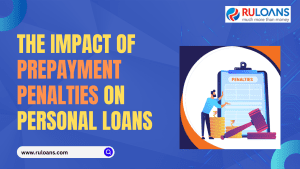Personal loans are an extremely popular and easily accessible loan type available in the market. They offer far more flexibility than any other option and give you complete control over how you wish to use the funds you borrow. Millions of Indians use it as a convenient credit source that does not require any collateral.
However, while this offering may seem lucrative, there can often be several hidden charges in personal loans. Not being careful with the same can add considerable costs to the amount you already owe, which will only grow over time.
While hidden charges in home loans and education loans are a common occurrence, these can rise exceptionally high for personal loans. The accessibility of these loans means that it can be easy to slip in undisclosed fees amidst all the paperwork.
Hidden charges in personal loans can take several forms. Some of the major ones that you must keep an eye out for are:
Processing Fees
When applying for a personal loan, financial institutions charge processing fees to cover the application processing and disbursal expenses. This amount can differ from institution to institution. Make sure you check the fees charged and compare them with those of competitors. Processing fees are usually non-refundable, even if your loan application is not approved.
Late Payment Fees
Late payment fees are charged when you do not pay your EMI on time. These fees can range between 2% to 3% of the EMI amount. However, additional interest will be levied on the late fee, which can be much higher than your loan interest!
While the percentage may seem small, late fees can pile up quickly, and so will the added GST charges. Late payment fees are one of the most common traps people fall into when it comes to personal loans.
Foreclosure Fees
You may think that repaying your loan before the due date may be a positive thing. However, prepayment of your loan amount deprives lenders of the interest they could have earned, and so they charge a foreclosure charge on the same. If you borrow money for a period of 10 years and wish to pay it back within 5 years itself, you will be charged additional foreclosure fees.
Make sure you check the total foreclosure fees involved to ensure that you do not have to end up paying the penalty for trying to be debt-free early. Even after you have cleared your loan, you may be charged extra for a NOC from the lender.
Prepayment Penalties
Say, you do not wish to pay off the whole loan amount, but just a little more than your EMI. This, too, will be penalized, and your bank shall make you pay additional fees for the extra money you offer. This can range between 2-5% of the outstanding loan amount, which could be a significant sum in the end.
Steps To Avoid Paying Hidden Charges
You can take a few smart steps to avoid paying additional charges on a personal loan. These are:
Assess The Agreement Carefully
The loan agreement shared between the lender and you can be a long and complicated document, including all the terms and conditions of the loan. You may be tempted to skip reading this time-consuming document, but that could cost you significant sums of money.
Evaluate the document’s contents and scan all the hidden charges mentioned in the loan offer. This will prepare you for all upcoming expenses and even help you negotiate to reduce the costs.
Know the charges involved From the beginning, itself, beware of the charges agreed upon. Once you know these charges, calculate the exact amount you have to repay using a personal loan EMI calculator. Compare this with the final amount mentioned so that you can identify all the hidden costs involved.









